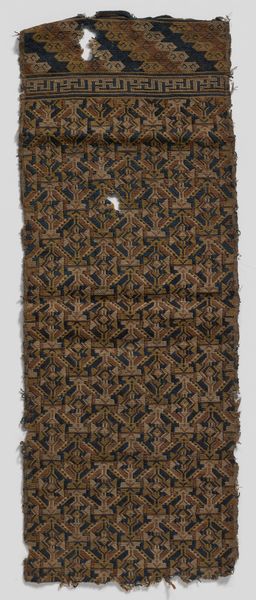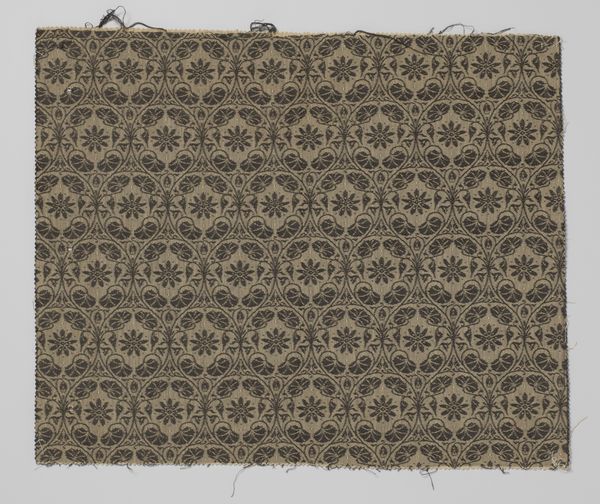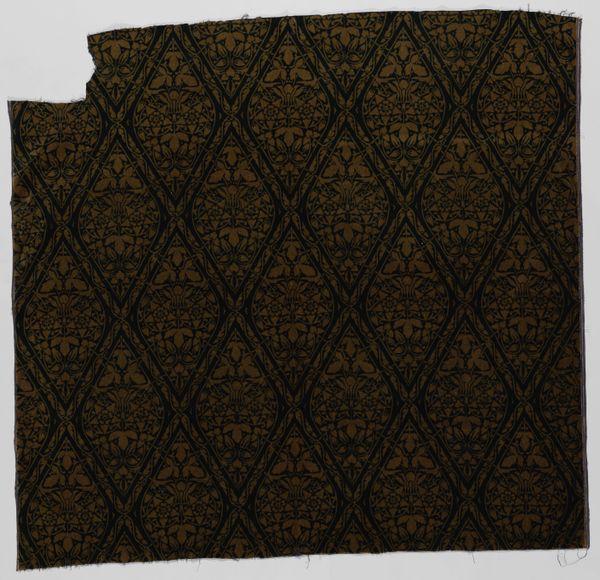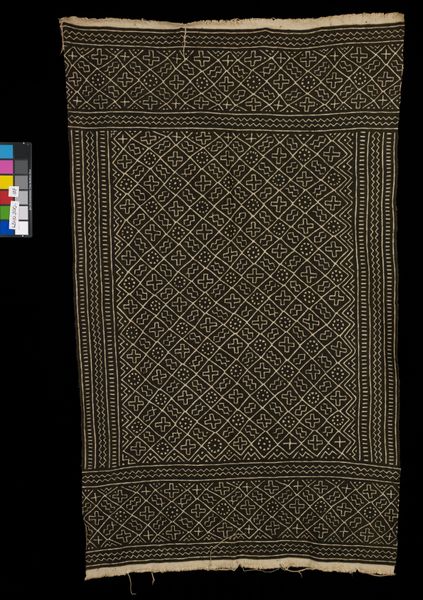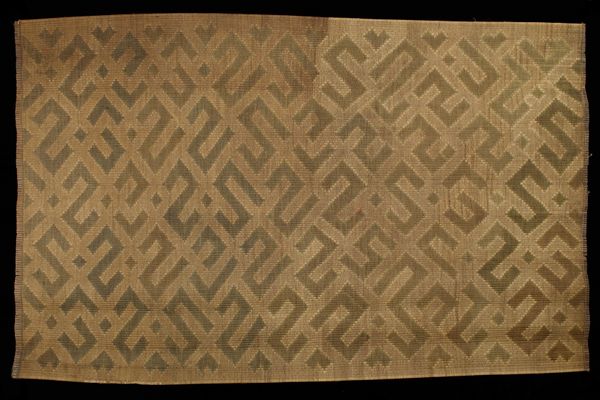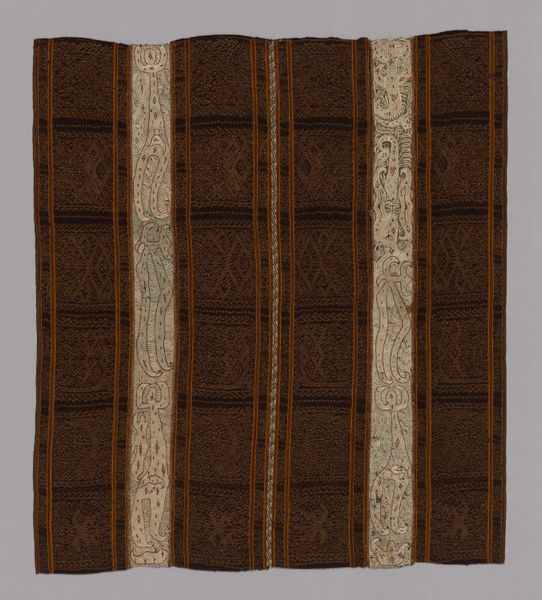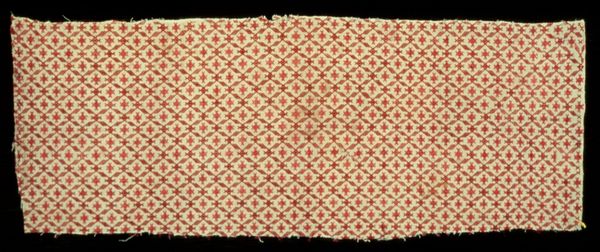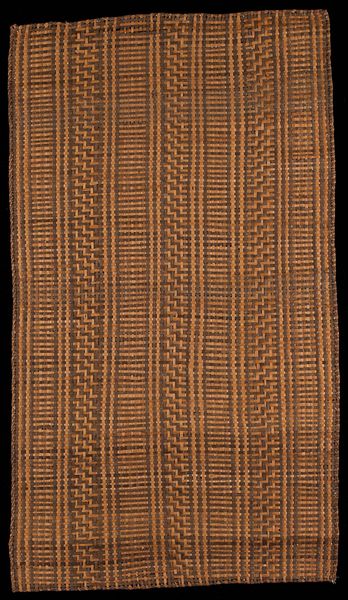
weaving, textile
#
arts-&-crafts-movement
#
weaving
#
textile
#
geometric
#
decorative-art
Dimensions: height 57.0 cm, width 84.0 cm
Copyright: Rijks Museum: Open Domain
Curator: Right, so, glancing at this, I immediately think: dignified, slightly mournful wallpaper. The scale isn’t overwhelming, but the texture looks rich. Does anyone know about this piece? Editor: We are looking at a fragment of "Gordijnstof met geornamenteerde lengtestrepen"—a curtain fabric with ornamented longitudinal stripes, created somewhere between 1900 and 1925, attributed to W.G.J. Ramaer & Co. The weaving and textiles involved really speak to the Arts and Crafts movement. Curator: "Ornamented longitudinal stripes"—such a clinical description! What a joy-sapping title for something that was meant to, you know, soften a room, to hold and hide us. But it also screams William Morris to me; nature, stylized into repeating geometries, the insistence on beauty for everyone. It makes you think, who were the people in the rooms with these textiles? Editor: Exactly. This piece participates in a lineage of radical homemaking! Consider that the Arts and Crafts movement saw beauty as intrinsically linked to social reform—it was a response to industrial alienation, aiming to uplift the working class by providing access to well-crafted, aesthetically pleasing items. And there’s a deeply gendered aspect to this, right? Who are allowed into what rooms; who cares about its ornament? Curator: That's what I love to mull about... It looks aged, but like it held its shape really well—a testament to how fabric can both represent and perform social roles. It wasn’t just "curtain fabric," it was the visual and tactile manifestation of a particular cultural aspiration. Editor: And it offered opportunities to engage—particularly for women, and also for marginalized artisans more generally. To challenge hierarchies of production. You think about all those domestic laborers involved in design work at that time... Curator: Still... there's also the quiet hum of domestic containment, the very real enclosure that patterns like these also reinforce: the idea of ‘a woman’s place’. Like, it holds a contradiction—the craft and skill, the warmth, but then the silent pressure of societal expectation. The ornamental design itself can also give a sense of entrapment. It makes you wonder if anyone felt they had to live up to that pattern, to neatly exist in their role. Editor: Those tensions make it speak to contemporary experience in unexpectedly rich ways. Thank you, I'll carry that tension.
Comments
No comments
Be the first to comment and join the conversation on the ultimate creative platform.
